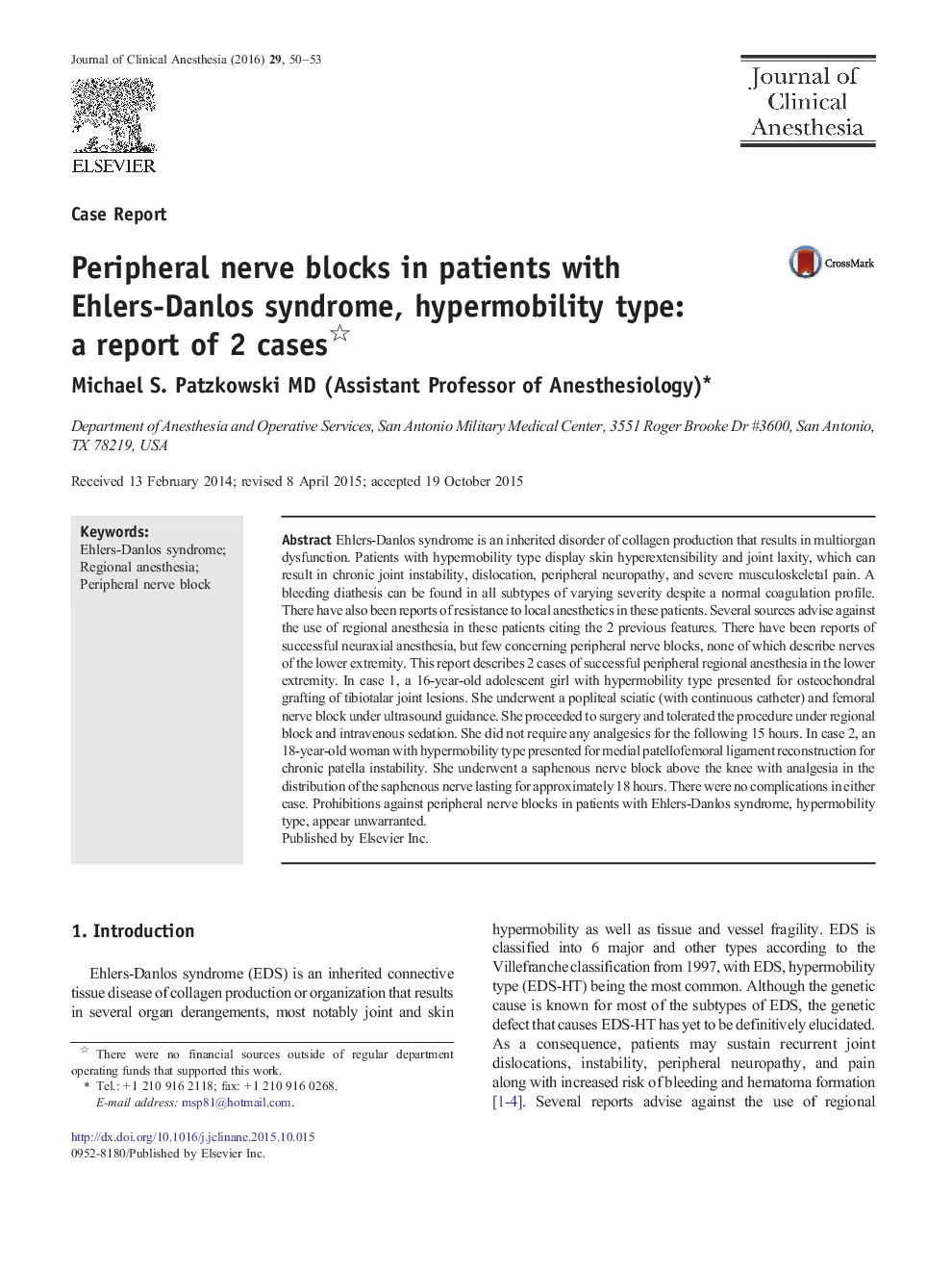| Article ID | Journal | Published Year | Pages | File Type |
|---|---|---|---|---|
| 5884962 | Journal of Clinical Anesthesia | 2016 | 4 Pages |
Abstract
Ehlers-Danlos syndrome is an inherited disorder of collagen production that results in multiorgan dysfunction. Patients with hypermobility type display skin hyperextensibility and joint laxity, which can result in chronic joint instability, dislocation, peripheral neuropathy, and severe musculoskeletal pain. A bleeding diathesis can be found in all subtypes of varying severity despite a normal coagulation profile. There have also been reports of resistance to local anesthetics in these patients. Several sources advise against the use of regional anesthesia in these patients citing the 2 previous features. There have been reports of successful neuraxial anesthesia, but few concerning peripheral nerve blocks, none of which describe nerves of the lower extremity. This report describes 2 cases of successful peripheral regional anesthesia in the lower extremity. In case 1, a 16-year-old adolescent girl with hypermobility type presented for osteochondral grafting of tibiotalar joint lesions. She underwent a popliteal sciatic (with continuous catheter) and femoral nerve block under ultrasound guidance. She proceeded to surgery and tolerated the procedure under regional block and intravenous sedation. She did not require any analgesics for the following 15 hours. In case 2, an 18-year-old woman with hypermobility type presented for medial patellofemoral ligament reconstruction for chronic patella instability. She underwent a saphenous nerve block above the knee with analgesia in the distribution of the saphenous nerve lasting for approximately 18 hours. There were no complications in either case. Prohibitions against peripheral nerve blocks in patients with Ehlers-Danlos syndrome, hypermobility type, appear unwarranted.
Related Topics
Health Sciences
Medicine and Dentistry
Anesthesiology and Pain Medicine
Authors
Michael S. (Assistant Professor of Anesthesiology),
